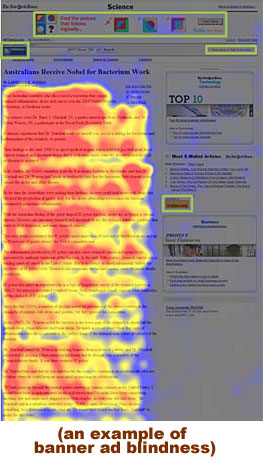If you work in media or publishing, please, please, please, read the 2009 State of the News Media Report. While it does not specifically focus on B2B media, the trends seen in broader news magazines, newspapers and other media are instructive. It begins very soberly:
“Some of the numbers are chilling.”
Full of data, the report looks at the trends that are reshaping media, magazines, news, and many related areas. A few key takeaways:
 Changing Audience Behavior
Changing Audience Behavior
“Perhaps least noticed yet most important, the audience migration to the Internet is now accelerating. The number of Americans who regularly go online for news, by one survey, jumped 19% in the last two years; in 2008 alone traffic to the top 50 news sites rose 27%.” [Source]“The data also suggest a clear trend in the changing nature of how Americans now learn about the world around them. People are relying more heavily — both during peak moments and in general — on platforms that can deliver news when audiences want it rather than at appointed times, a sign of a growing “on demand” news culture. People increasingly want the news they want when they want it. Much of that traffic, moreover, went to the biggest Internet sites, many of them offering news primarily from wire services or aggregated from legacy media outlets.” [Source]
“The public retained a deep skepticism about what they see, hear and read in the media. No major news outlet – broadcast or cable, print or online – stood out as particularly credible. There was no indication that Americans altered their fundamental judgment that the news media are politically biased, that stories are often inaccurate and that journalists do not care about the people they report on.” [Source]
“Journalism, deluded by its profitability and fearful of technology, let others outside the industry steal chance after chance online.” [Source]
“Power is shifting to the individual journalist and away, by degrees, from journalistic institutions.” [Source]
 Collapse of a Revenue Model
Collapse of a Revenue Model
“Newspaper ad revenues have fallen 23% in the last two years. Some papers are in bankruptcy, and others have lost three-quarters of their value. By our calculations, nearly one out of every five journalists working for newspapers in 2001 is now gone, and 2009 may be the worst year yet.” [Source]“It is now all but settled that advertising revenue—the model that financed journalism for the last century—will be inadequate to do so in this one. Growing by a third annually just two years ago, online ad revenue to news websites now appears to be flattening; in newspapers it is declining.” [Source]
“Even while online ad spending grew about 14% through the first three quarters of the year, most of it benefited Google and other search providers. Revenue from the sale of banners and other display ads that news websites depend on increased just 4%, and estimates are that it declined by the fourth quarter. One reason: the infinitely expanding universe of blogs and websites has forced them to cut their rates to compete for advertisers. The cost to reach 1,000 viewers fell by half in 2008 alone, to an estimated average of 26 cents.” [Source]
“As a deep recession on top of the loss of print classified revenue to electronic competitors took hold in mid-2008, conventional cost cutting simply was not enough for less profitable papers.” [Source]
Looking to another industry that continues to struggle amid massive changes in audience behavior and revenue models, TechDirt published a couple of articles on the music industry’s struggle to reshape itself. Read here and here. One interesting quote regarding a meeting of music industry insiders:
“Keith Harris, of a think tank called “Music Tank,” set the tone for the entire “debate” by noting that all of the important stakeholders were present — except, of course, the consumers “because they can’t afford to be here.” To that, everyone laughed — but it was quite telling. The industry still doesn’t believe that the actual consumers really should be a part of the conversation. The idea that they would be there for this debate seemed laughable.”
This quote seems to encapsulate the current state of things:
“The problem is that this industry is so focused on how much it’s going to lose, it never looks at the opportunities of how much money there is to be made.”
Discovering Opportunities and Creating New Business Models
Gawker proposes the following: “Do Less with Less.” The premise here is that print media should focus efforts on where they can create high quality products, but perhaps on a smaller scale, and being brutal about deciding what efforts they need to cut.
This reminds me of an article that I can’t seem to find that told the story of a woman who owned a sandwich company that landed a huge deal supplying sandwiches to Starbucks. As you would imagine, revenue jumped considerably, but after a couple years, her business was stretched meeting the demands of Starbucks, and profits were not all that great. She broke off her partnership with Starbucks to become a smaller company, focused on high quality products in a much smaller market. Her business is not just dramatically easier to manage, but more profitable on a smaller revenue amount. Go figure.
This has me thinking about the future. What will your business look like in 5 years? How will you serve customers – will it be the same way you did 5 years ago? Is there a revenue model to support that?
I am always fascinated by companies like Apple that seem to continually be planning for where they will be 5 years down the road. As a user of their products, I see the many changes they make to their products that is pushes them closer to being a media center in my living room. It could be the huge glossy screen on my new iMac or my iPhone’s ability to become a remote control that connects to my stereo, or the continuing way that this hardware and software company controls the world of digital music and movies – something that would have seemed laughable a decade ago.
10 years ago, Apple didn’t just think about how to make computers more cheaply and sell them to more people. They looked critically at the needs and changing behaviors of their audience, and identified ways to take advantage of these opportunities. They were not the first to see the opportunity; in fact, they were late to the game. But they executed on their plans better than anyone else – by a wide margin.
When I link to the articles referenced above, I don’t mean to be negative, or a doom mongerer – I am a glass is half full kind of guy. But I am also mindful of this quote from the movie Batman Begins:
“You always fear what you don’t understand.”
And this is why it is critical to study the ways that audience behavior is changing, and how revenue models are shifting. We live in interesting times, but the upside is that we get to help shape things. We have to move beyond fear, beyond reactionism – to take small, but confident steps into the future.
Likely, publishers and media companies won’t be serving their industries in exact same ways, with the exact same revenue models five years from now. How will they do each? The answer lies in studying customer behavior, and thinking of solutions that focus less on their current capabilities, and more on solving critical needs of those they serve.
B2B niche media does not seem to have experienced the severity of collapse that broader based publications have seen, and this is a good sign. Highly targeted information to business professionals in specific industries is INCREDIBLY valuable, and for a company like the one I work for, this is our bread and butter.
Innovation comes in hard times with few resources. The opportunity is now – to pull your industry together, to support them, to educate them, to solve their problems, to help them innovate, and to make them stronger. This is how a recession becomes an opportunity for growth. And while I would love to see growth this quarter, it is equally as important to plan for growth next year and in five years – to set up your brand to come out of the recession miles ahead of competitors.

